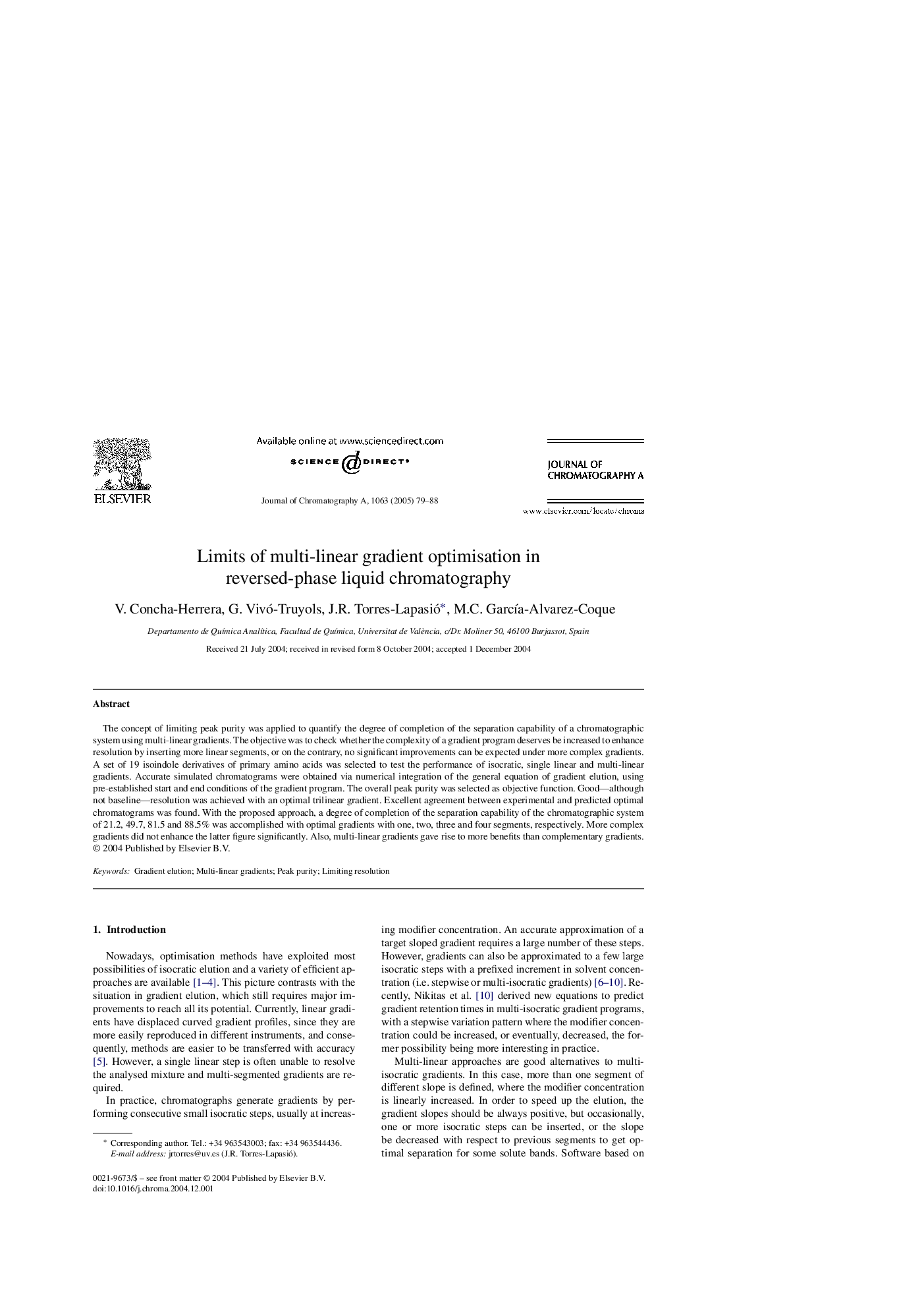| Article ID | Journal | Published Year | Pages | File Type |
|---|---|---|---|---|
| 9749328 | Journal of Chromatography A | 2005 | 10 Pages |
Abstract
The concept of limiting peak purity was applied to quantify the degree of completion of the separation capability of a chromatographic system using multi-linear gradients. The objective was to check whether the complexity of a gradient program deserves be increased to enhance resolution by inserting more linear segments, or on the contrary, no significant improvements can be expected under more complex gradients. A set of 19 isoindole derivatives of primary amino acids was selected to test the performance of isocratic, single linear and multi-linear gradients. Accurate simulated chromatograms were obtained via numerical integration of the general equation of gradient elution, using pre-established start and end conditions of the gradient program. The overall peak purity was selected as objective function. Good-although not baseline-resolution was achieved with an optimal trilinear gradient. Excellent agreement between experimental and predicted optimal chromatograms was found. With the proposed approach, a degree of completion of the separation capability of the chromatographic system of 21.2, 49.7, 81.5 and 88.5% was accomplished with optimal gradients with one, two, three and four segments, respectively. More complex gradients did not enhance the latter figure significantly. Also, multi-linear gradients gave rise to more benefits than complementary gradients.
Keywords
Related Topics
Physical Sciences and Engineering
Chemistry
Analytical Chemistry
Authors
V. Concha-Herrera, G. Vivó-Truyols, J.R. Torres-Lapasió, M.C. GarcÃa-Alvarez-Coque,
